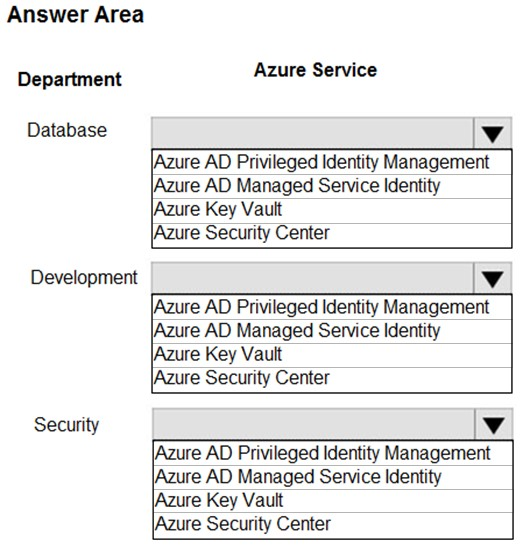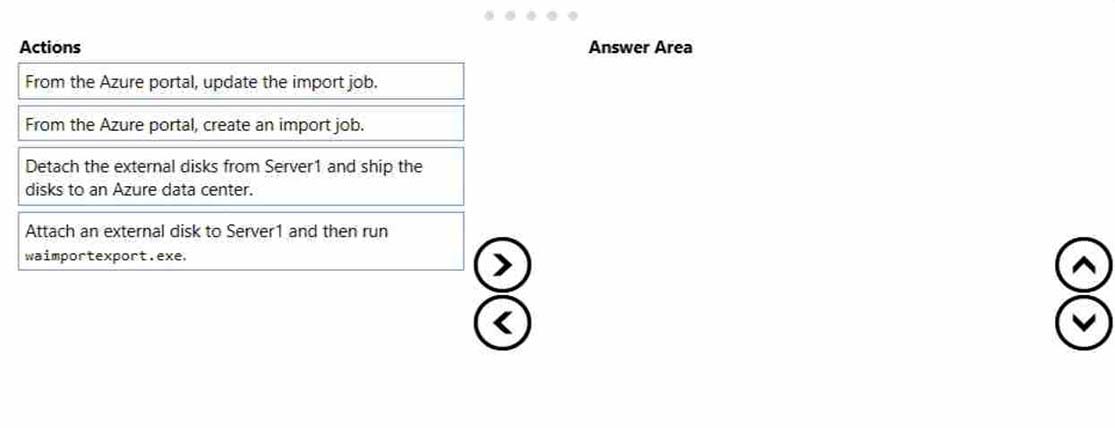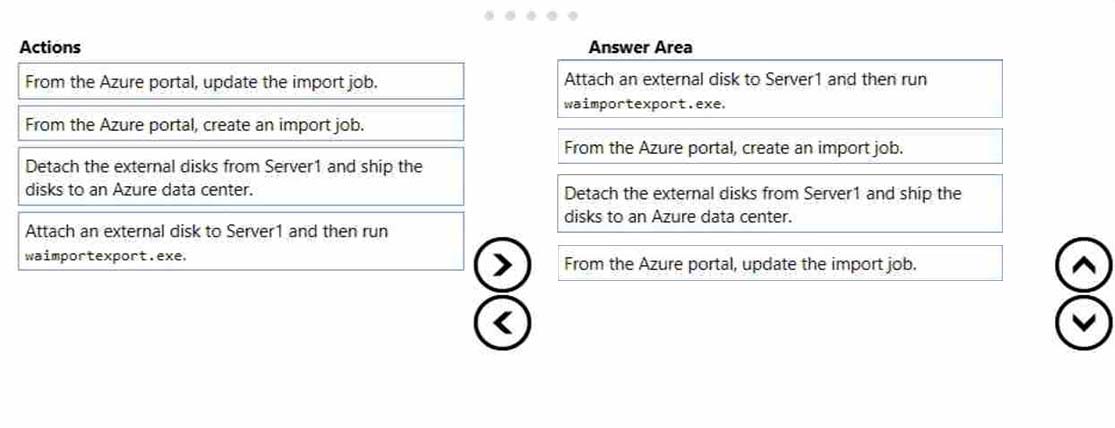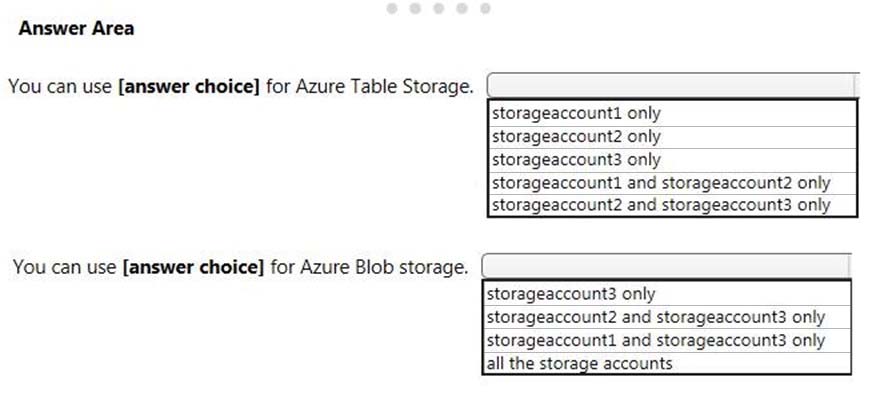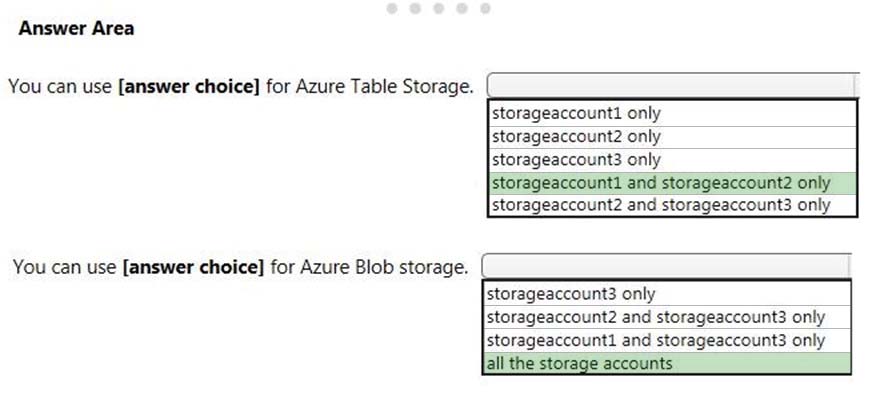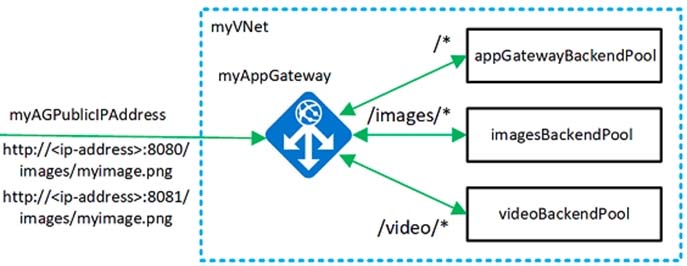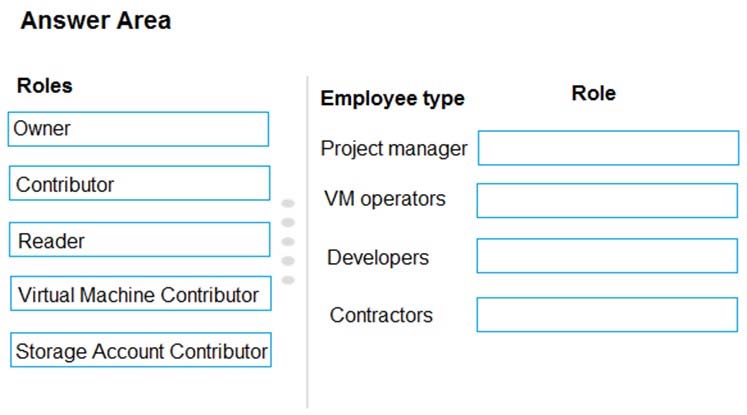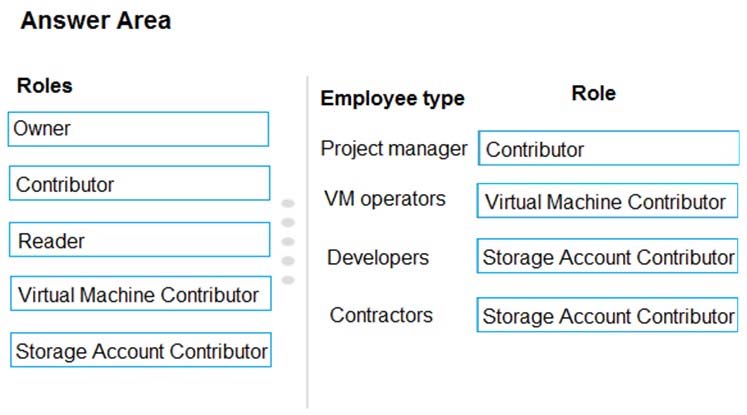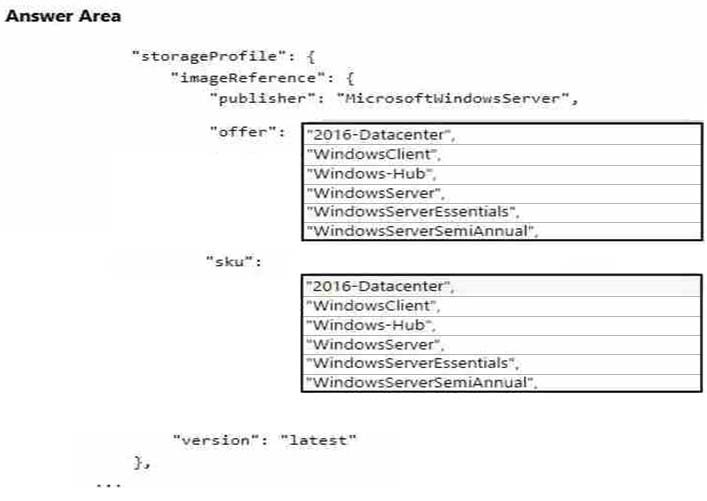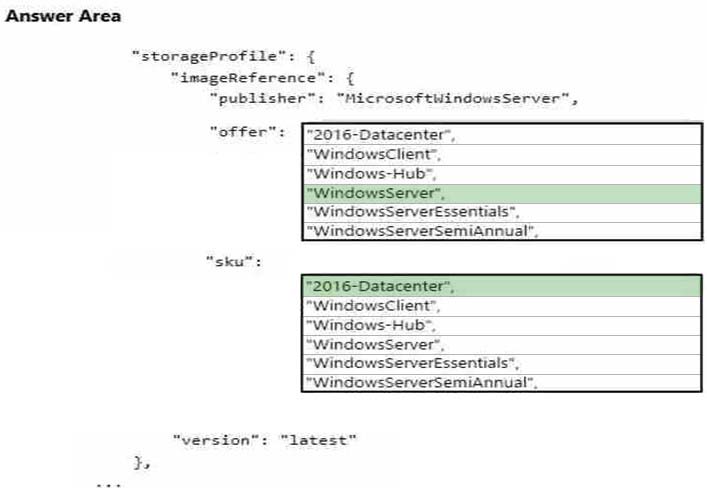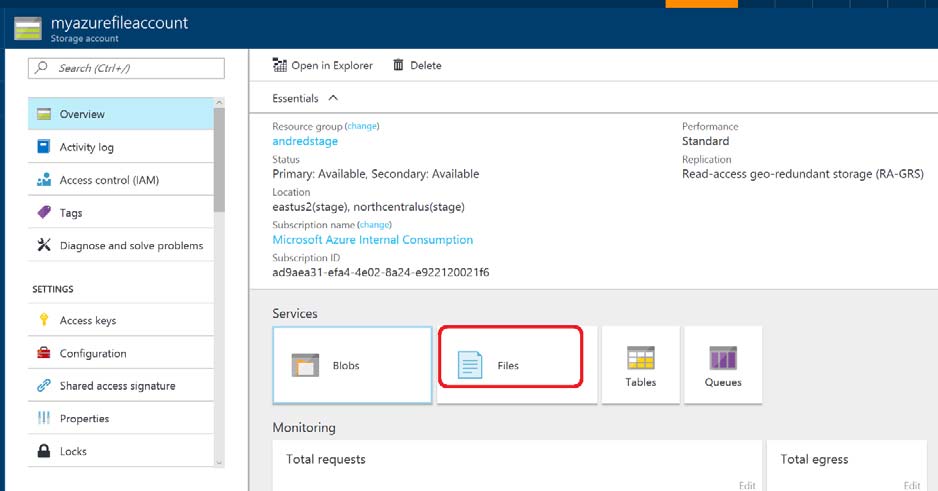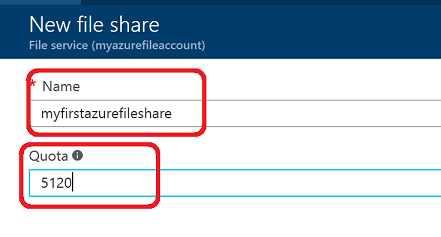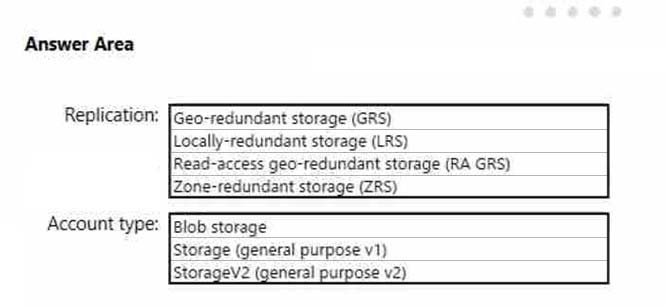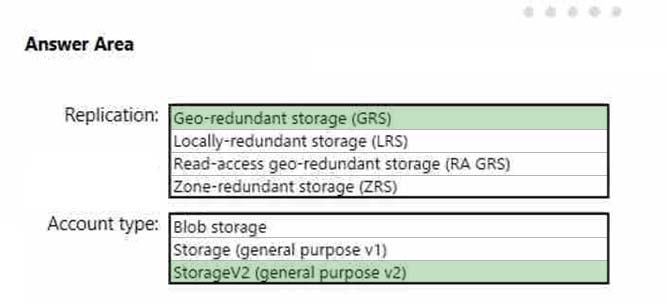AZ-300 Mock Test Free – 50 Realistic Questions to Prepare with Confidence.
Getting ready for your AZ-300 certification exam? Start your preparation the smart way with our AZ-300 Mock Test Free – a carefully crafted set of 50 realistic, exam-style questions to help you practice effectively and boost your confidence.
Using a mock test free for AZ-300 exam is one of the best ways to:
- Familiarize yourself with the actual exam format and question style
- Identify areas where you need more review
- Strengthen your time management and test-taking strategy
Below, you will find 50 free questions from our AZ-300 Mock Test Free resource. These questions are structured to reflect the real exam’s difficulty and content areas, helping you assess your readiness accurately.
You have an Azure subscription that contains an Azure Service Fabric cluster and a Service Fabric application named FabricApp. You develop and package a Service Fabric application named AppPackage. AppPackage is saved in a compressed folder named AppPackage.zip. You upload AppPackage.zip to an external store. You need to register AppPackage in the Azure subscription. What should you do first?
A. Run the New-ServiceFabricApplication cmdlet.
B. Repackage the application in a file named App.sfpkg.
C. Create a new Service Fabric cluster.
D. Copy AppPackage.zip to a blob storage account.
You are responsible for mobile app development for a company. The company develops apps on Windows Mobile, IOS, and Android. You plan to integrate push notifications into every app. You need to be able to send users alerts from a backend server. Which two options can you use to achieve this goal? Each correct answer presents a complete solution. NOTE: Each correct selection is worth one point.
A. Azure Web App
B. Azure Mobile App Service
C. Azure SQL Database
D. Azure Notification Hubs
E. a virtual machine
Note: This question is part of series of questions that present the same scenario. Each question in the series contains a unique solution that might meet the stated goals. Some question sets might have more than one correct solution, while others might not have a correct solution. After you answer a question in this section, you will NOT be able to return to it. As a result, these questions will not appear in the review screen. You have an Azure subscription. You have an on-premises file server named Server1 that runs Windows Server 2019. You manage Server1 by using Windows Admin Center. You need to ensure that if Server1 fails, you can recover the data from Azure. Solution: You create an Azure Storage account and an Azure Storage Sync service. You configure Azure File Sync for Server1. Does this meet the goal?
A. Yes
B. No
You manage a solution in Azure that consists of a single application which runs on a virtual machine (VM). Traffic to the application has increased dramatically. The application must not experience any downtime and scaling must be dynamically defined. You need to define an auto-scale strategy to ensure that the VM can handle the workload. Which three options should you recommend? Each correct answer presents a complete solution. NOTE: Each correct selection is worth one point.
A. Deploy application automatic vertical scaling.
B. Create a VM availability set.
C. Create a VM scale set.
D. Deploy application automatic horizontal scaling.
E. Deploy a custom auto-scale implementation.
Note: This question is part of series of questions that present the same scenario. Each question in the series contains a unique solution that might meet the stated goals. Some question sets might have more than one correct solution, while others might not have a correct solution. After you answer a question in this section, you will NOT be able to return to it. As a result, these questions will not appear in the review screen. You are planning to create a virtual network that has a scale set that contains six virtual machines (VMs). A monitoring solution on a different network will need access to the VMs inside the scale set. You need to define public access to the VMs. Solution: Deploy a standalone VM that has a public IP address to the virtual network. Does the solution meet the goal?
A. Yes
B. No
What should you create to configure AG2?
A. multi-site listeners
B. URL path-based routing rules
C. basic routing rules
D. an additional public IP address
E. basic listeners
SIMULATION - Click to expand each objective. To connect to the Azure portal, type https://portal.azure.com in the browser address bar.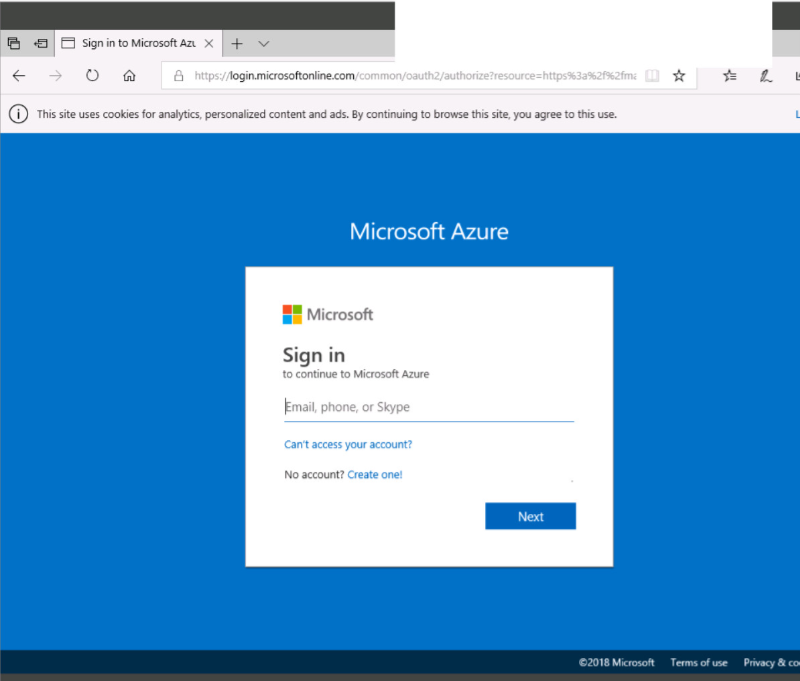
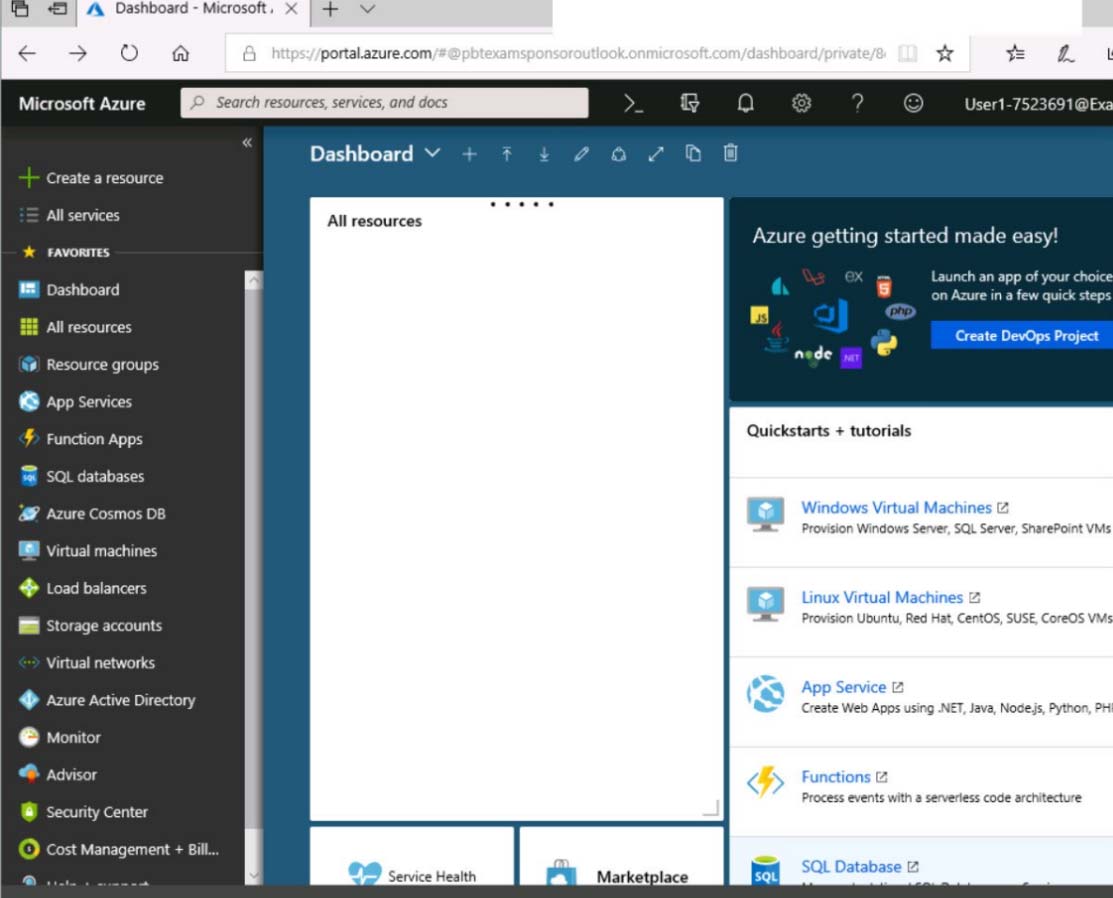
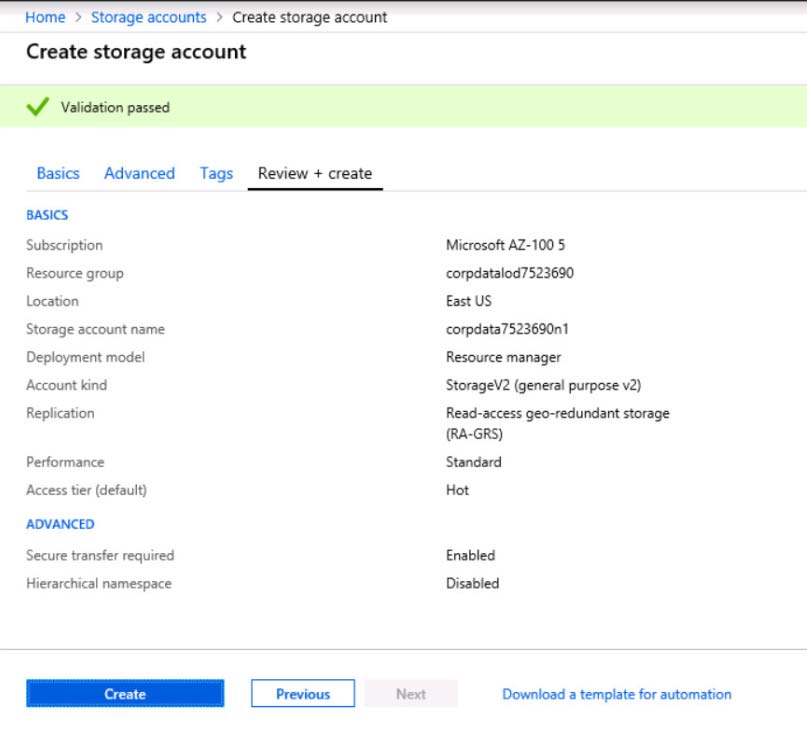
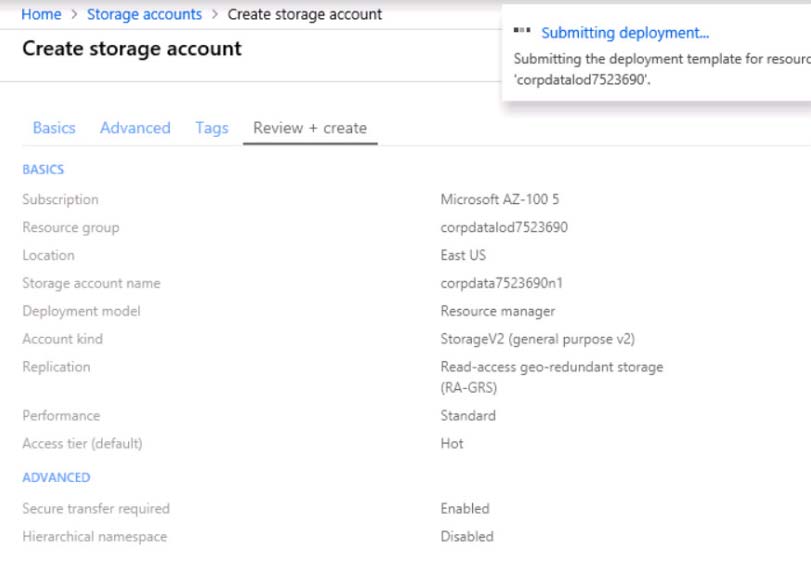
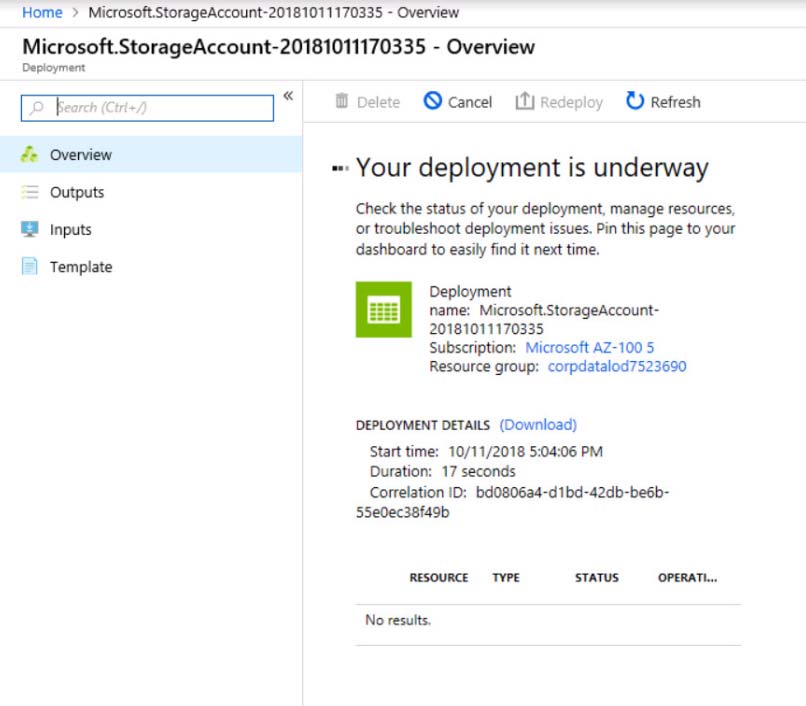
When you are finished performing all the tasks, click the "˜Next' button. Note that you cannot return to the lab once you click the "˜Next' button. Scoring occur in the background while you complete the rest of the exam. Overview - The following section of the exam is a lab. In this section, you will perform a set of tasks in a live environment. While most functionality will be available to you as it would be in a live environment, some functionality (e.g., copy and paste, ability to navigate to external websites) will not be possible by design. Scoring is based on the outcome of performing the tasks stated in the lab. In other words, it doesn't matter how you accomplish the task, if you successfully perform it, you will earn credit for that task. Labs are not timed separately, and this exam may have more than one lab that you must complete. You can use as much time as you would like to complete each lab. But, you should manage your time appropriately to ensure that you are able to complete the lab(s) and all other sections of the exam in the time provided. Please note that once you submit your work by clicking the Next button within a lab, you will NOT be able to return to the lab. To start the lab - You may start the lab by clicking the Next button. You plan to create 100 Azure virtual machines on each of the following three virtual networks: - VNET1005a - VNET1005b - VNET1005c All the network traffic between the three virtual networks will be routed through VNET1005a. You need to create the virtual networks, and then to ensure that all the Azure virtual machines can connect to other virtual machines by using their private IP address. The solutions must NOT require any virtual gateways and must minimize the number of peerings. What should you do from the Azure portal before you configuring IP routing?
DRAG DROP - You have an Azure subscription that is used by four departments in your company. The subscription contains 10 resource groups. Each department uses resources in several resource groups. You need to send a report to the finance department. The report must detail the costs for each department. Which three actions should you perform in sequence? To answer, move the appropriate actions from the list of actions to the answer area and arrange them in the correct order. Select and Place:
Note: This question is part of series of questions that present the same scenario. Each question in the series contains a unique solution that might meet the stated goals. Some question sets might have more than one correct solution, while others might not have a correct solution. After you answer a question in this section, you will NOT be able to return to it. As a result, these questions will not appear in the review screen. You have an Azure subscription. You have an on-premises file server named Server1 that runs Windows Server 2019. You manage Server1 by using Windows Admin Center. You need to ensure that if Server1 fails, you can recover the data from Azure. Solution: From the Azure portal, you create a Recovery Services vault. On VM1, you install the Azure Backup agent and you schedule a backup. Does this meet the goal?
A. Yes
B. No
You configure Azure AD Connect for Azure Active Directory Seamless Single Sign-On (Azure AD Seamless SSO) for an on-premises network. Users report that when they attempt to access myapps.microsoft.com, they are prompted multiple times to sign in and are forced to use an account name that ends with onmicrosoft.com. You discover that there is a UPN mismatch between Azure AD and the on-premises Active Directory. You need to ensure that the users can use single-sign on (SSO) to access Azure resources. What should you do first?
A. From on-premises network, deploy Active Directory Federation Services (AD FS).
B. From Azure AD, add and verify a custom domain name.
C. From on-premises network, request a new certificate that contains the Active Directory domain name.
D. From the server that runs Azure AD Connect, modify the filtering options.
You need to configure AG1. What should you create?
A. a multi-site listener
B. a basic routing rule
C. a URL path-based routing rule
D. a basic listener
You create a container image named Image1 on a developer workstation. You plan to create an Azure Web App for Containers named WebAppContainer that will use Image1. You need to upload Image1 to Azure. The solution must ensure that WebAppContainer can use Image1. To which storage type should you upload Image1?
A. Azure Container Registry
B. an Azure Storage account that contains a blob container
C. an Azure Storage account that contains a file share
D. Azure Container Instances
HOTSPOT - Your organization has developed and deployed several Azure App Service Web and API applications. The applications use Azure SQL Database to store and retrieve data. Several departments have the following requests to support the applications:You need to recommend the appropriate Azure service for each department request. What should you recommend? To answer, configure the appropriate options in the dialog box in the answer area. NOTE: Each correct selection is worth one point. Hot Area:
Your company is developing an e-commerce Azure App Service Web App to support hundreds of restaurant locations around the world. You are designing the messaging solution architecture to support the e-commerce transactions and messages. The solution will include the following features:You need to design a solution for the Inventory Distribution feature.
A. Azure Service Bus
B. Azure Relay
C. Azure Event Grid
D. Azure Event Hub
You are creating an IoT solution using Azure Time Series Insights. You configure the environment to ensure that all data for the current year is available. What should you do?
A. Add a disaster recovery (DR) strategy.
B. Set a value for the Data retention time setting.
C. Change the pricing tier.
D. Create a reference data set.
DRAG DROP - You have an Azure subscription that contains a storage account. You have an on-premises server named Server1 that runs Windows Server 2016. Server1 has 2 TB of data. You need to transfer the data to the storage account by using the Azure Import/Export service. In which order should you perform the actions? To answer, move all actions form the list of actions to the answer area and arrange them in the correct order. NOTE: More than one order of answer choices is correct. You will receive credit for any of the correct orders you select. Select and Place:
DRAG DROP - You have an Azure subscription that contains an Azure Service Bus named Bus1. Your company plans to deploy two Azure web apps named App1 and App2. The web app will create messages that have the following requirements: ✑ Each message created by App1 must be consumed by only a single consumer. ✑ Each message created by App2 will consumed by multiple consumers. Which resource should you create for each web app? To answer, drag the appropriate resources to the correct web apps. Each resource may be used once, more than once, or not at all. You may need to drag the split bar between panes or scroll to view content. Select and Place:
Note: This question is part of series of questions that present the same scenario. Each question in the series contains a unique solution that might meet the stated goals. Some question sets might have more than one correct solution, while others might not have a correct solution. After you answer a question in this section, you will NOT be able to return to it. As a result, these questions will not appear in the review screen. A company backs up data to on-premises servers at their main facility. The company currently has 30 TB of archived data that infrequently used. The facility has download speeds of 100 Mbps and upload speeds of 20 Mbps. You need to securely transfer all backups to Azure Blob Storage for long-term archival. All backup data must be sent within seven days. Solution: Use the Set-AzureStorageBlobContent Azure PowerShell command to copy all backups asynchronously to Azure Blob Storage. Does this meet the goal?
A. Yes
B. No
You have an Azure Active Directory (Azure AD) tenant. All administrators must enter a verification code to access the Azure portal. You need to ensure that the administrators can access the Azure portal only from your on-premises network. What should you configure?
A. the default for all the roles in Azure AD Privileged Identity Management
B. an Azure AD Identity Protection user risk policy
C. an Azure AD Identity Protection sign-in risk policy
D. the multi-factor authentication service settings
You create an Azure Storage account named contosostorage. You plan to create a file share named data. Users need to map a drive to the data file share from home computers that run Windows 10. Which outbound port should you open between the home computers and the data file share?
A. 80
B. 443
C. 445
D. 3389
You have an Azure subscription named Subscription1 that is used by several departments at your company. Subscription1 contains the resources in the following table.Another administrator deploys a virtual machine named VM1 and an Azure Storage account named Storage2 by using a single Azure Resource Manager template. You need to view the template used for the deployment. From which blade can you view the template that was used for the deployment?
A. Container1
B. VM1
C. Storage2
D. RG1
You have a web app named WebApp1 that uses an Azure App Service plan named Plan1. Plan1 uses the D1 pricing tier and has an instance count of 1. You need to ensure that all connections to WebApp1 use HTTPS. What should you do first?
A. Scale up Plan1.
B. Modify the connection strings for WebApp1.
C. Scale out Plan1.
D. Disable anonymous access to WebApp1.
DRAG DROP - You have an Azure Active Directory (Azure AD) tenant that has the initial domain name. You have a domain name of contoso.com registered at a third-party registrar. You need to ensure that you can create Azure AD users that have names containing a suffix of @contoso.com. Which three actions should you perform in sequence? To answer, move the appropriate cmdlets from the list of cmdlets to the answer area and arrange them in the correct order. Select and Place:
You have an Azure Kubernetes Service (AKS) cluster named Clus1 in a resource group named RG1. An administrator plans to manage Clus1 from an Azure AD-joined device. You need to ensure that the administrator can deploy the YAML application manifest file for a container application. You install the Azure CLI on the device. Which command should you run next?
A. kubectl get nodes
B. az aks install-cli
C. kubectl apply “”f appl.yaml
D. az aks get-credentials –resource-group RG1 –name Clus1
HOTSPOT - You have Azure Storage accounts as shown in the following exhibit.Use the drop-down menus to select the answer choice that completes each statement based on the information presented in the graphic. NOTE: Each correct selection is worth one point. Hot Area:
HOTSPOT - Your company hosts multiple website by using Azure virtual machine scale sets (VMSS) that run Internet Information Server (IIS). All network communications must be secured by using end to end Secure Socket Layer (SSL) encryption. User sessions must be routed to the same server by using cookie-based session affinity. The image shown depicts the network traffic flow for the web sites to the VMSS.Use the drop-down menus to select the answer choice that answers each question. NOTE: Each correct selection is worth one point. Hot Area:
You have an Azure subscription named Subscription1. Subscription1 contains a virtual machine named VM1. You have a computer Computer1 that runs Windows 10. Computer1 is connected to the Internet. You add a network interface named Interface1 to VM1 as shown in the exhibit. (Click the Exhibit tab.)From Computer1, you attempt to connect to VM1 by using Remote Desktop, but the connection fails. You need to establish a Remote Desktop connection to VM1. What should you do first?
A. Attach a network interface
B. Start VM1
C. Delete the DenyAllOutBound outbound port rule
D. Delete the DenyAllInBound inbound port rule
You have an Azure solution that uses Multi-Factor Authentication for added security when users are outside of the office. The usage model has been set to Per Authentication. Your company acquires another company and adds the new staff to Azure Active Directory (Azure AD). New staff members must use Multi-Factor Authentication. You need to change the usage model to Per Enabled User. What should you recommend?
A. Create a new Multi-Factor Authentication provider and reconfigure the usage model.
B. Create a new Multi-Factor Authentication provider with a backup from the current Multi-Factor Authentication provider data.
C. Use the Azure portal to change the current usage model.
D. Use Azure CLI to change the current usage model.
You have a virtual network named VNet1 as shown in the exhibit. (Click the Exhibit tab.)No devices are connected to VNet1. You plan to peer VNet1 to another virtual network named VNet2 in the same region. VNet2 has an address space of 10.2.0.0/16. You need to create the peering. What should you do first?
A. Add a gateway subnet to VNet1.
B. Create a subnet on VNet1 and VNet2
C. Modify the address space of VNet1
D. Configure a service endpoint on VNet2
Note: This question is part of series of questions that present the same scenario. Each question in the series contains a unique solution that might meet the stated goals. Some question sets might have more than one correct solution, while others might not have a correct solution. After you answer a question in this section, you will NOT be able to return to it. As a result, these questions will not appear in the review screen. You have an Azure subscription named Subscription1. Subscription1 contains a resource group named RG1. RG1 contains resources that were deployed by using templates. You need to view the date and time when the resources were created in RG1. Solution: From the Subscription blade, you select the subscription, and then click Resource providers. Does this meet the goal?
A. Yes
B. No
SIMULATION - Click to expand each objective. To connect to the Azure portal, type https://portal.azure.com in the browser address bar.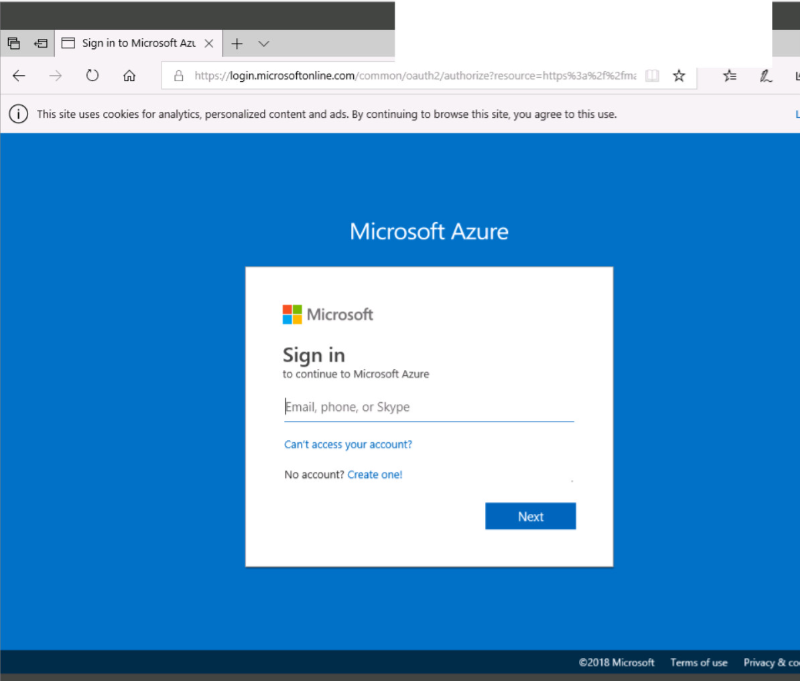
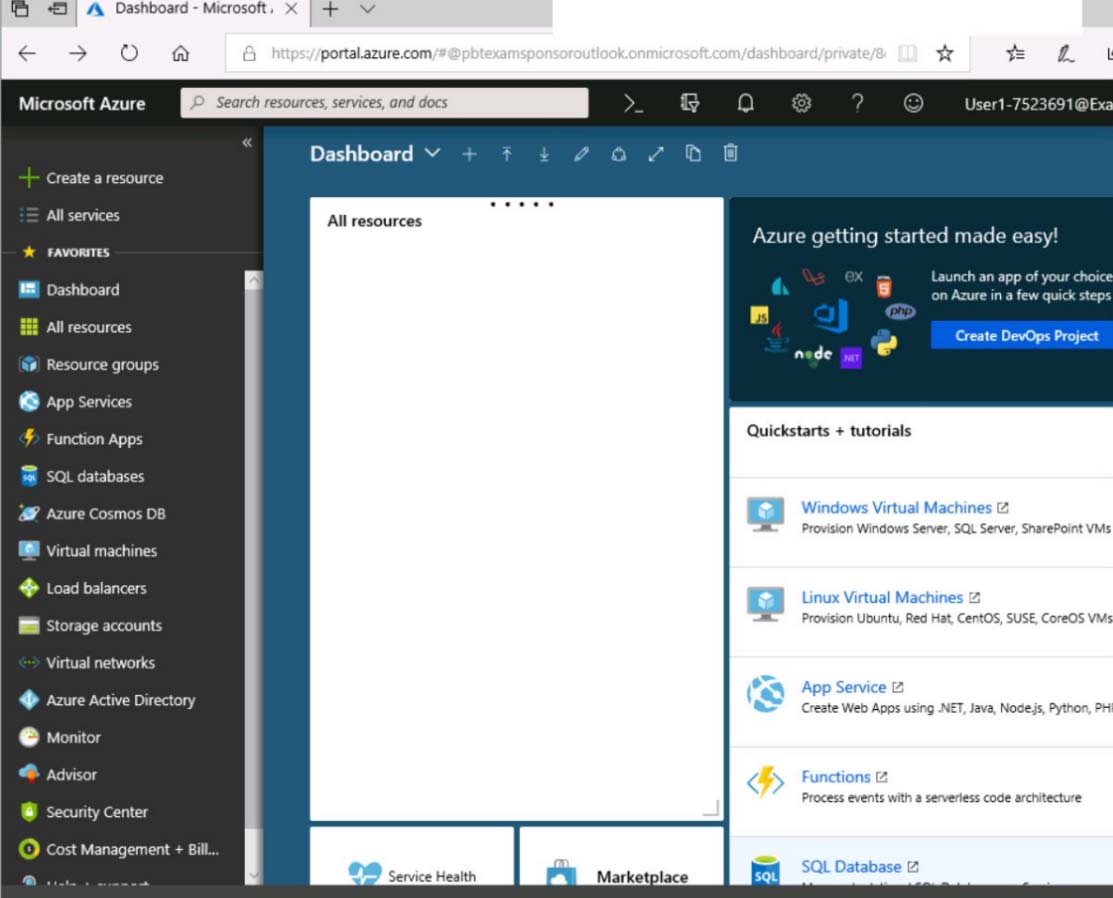
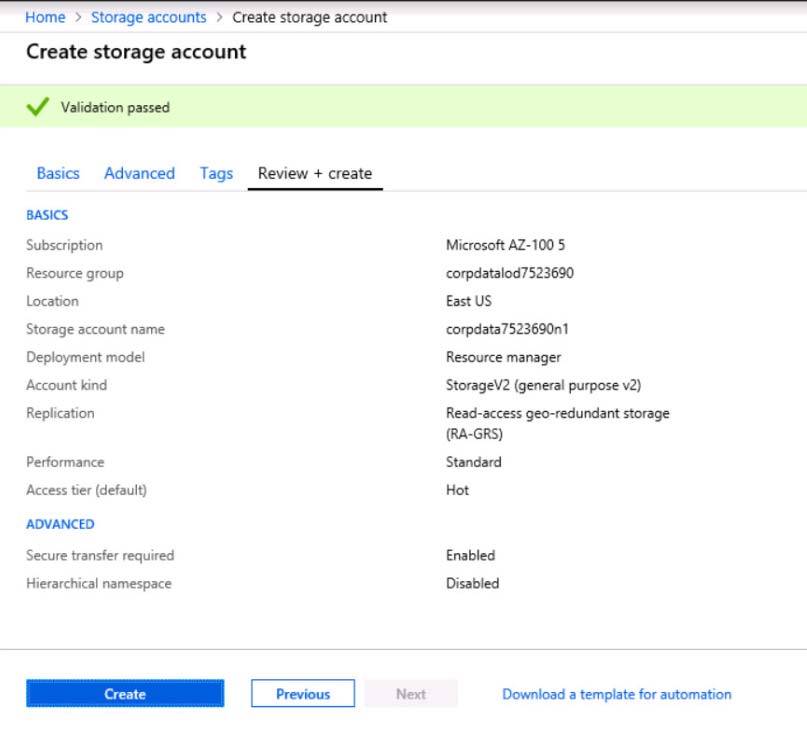
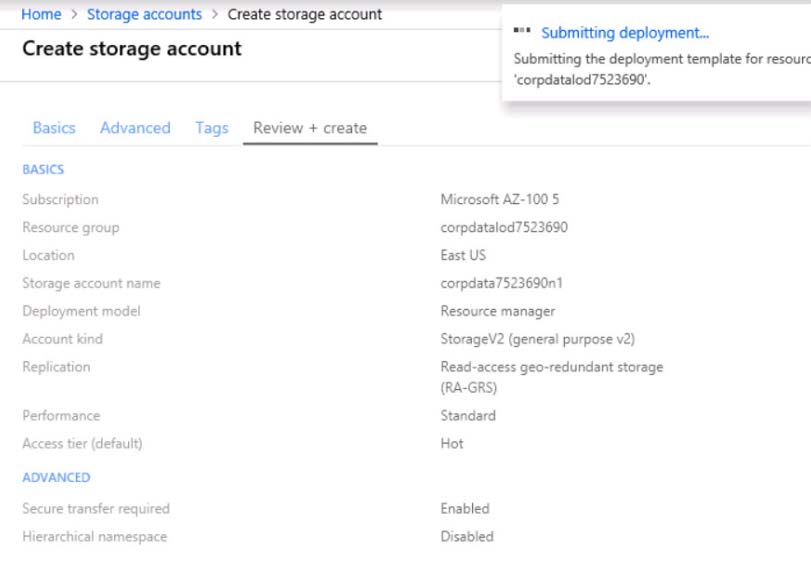
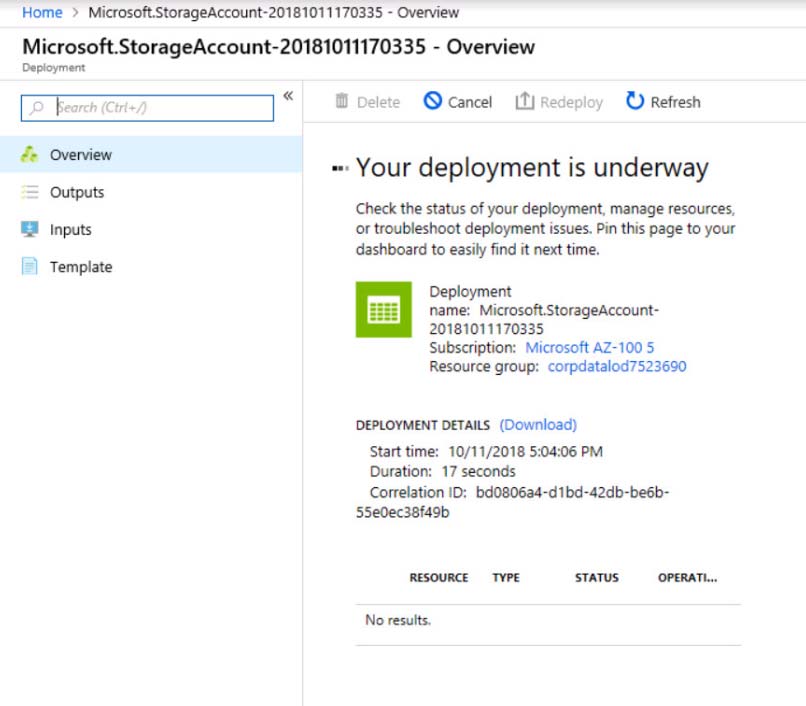
When you are finished performing all the tasks, click the "˜Next' button. Note that you cannot return to the lab once you click the "˜Next' button. Scoring occur in the background while you complete the rest of the exam. Overview - The following section of the exam is a lab. In this section, you will perform a set of tasks in a live environment. While most functionality will be available to you as it would be in a live environment, some functionality (e.g., copy and paste, ability to navigate to external websites) will not be possible by design. Scoring is based on the outcome of performing the tasks stated in the lab. In other words, it doesn't matter how you accomplish the task, if you successfully perform it, you will earn credit for that task. Labs are not timed separately, and this exam may have more than one lab that you must complete. You can use as much time as you would like to complete each lab. But, you should manage your time appropriately to ensure that you are able to complete the lab(s) and all other sections of the exam in the time provided. Please note that once you submit your work by clicking the Next button within a lab, you will NOT be able to return to the lab. To start the lab - You may start the lab by clicking the Next button. Your company plans to store several documents on a public website. You need to create a container named bios that will host the documents in the storagelod8322489 storage account. The solution must ensure anonymous access and must ensure that users can browse folders in the container. What should you do from the Azure portal?
DRAG DROP - You need to prepare the New York office infrastructure for the migration of the on-premises virtual machines to Azure. Which four actions should you perform in sequence? To answer, move the appropriate actions from the list of actions to the answer area and arrange them in the correct order. Select and Place:
SIMULATION - Click to expand each objective. To connect to the Azure portal, type https://portal.azure.com in the browser address bar.
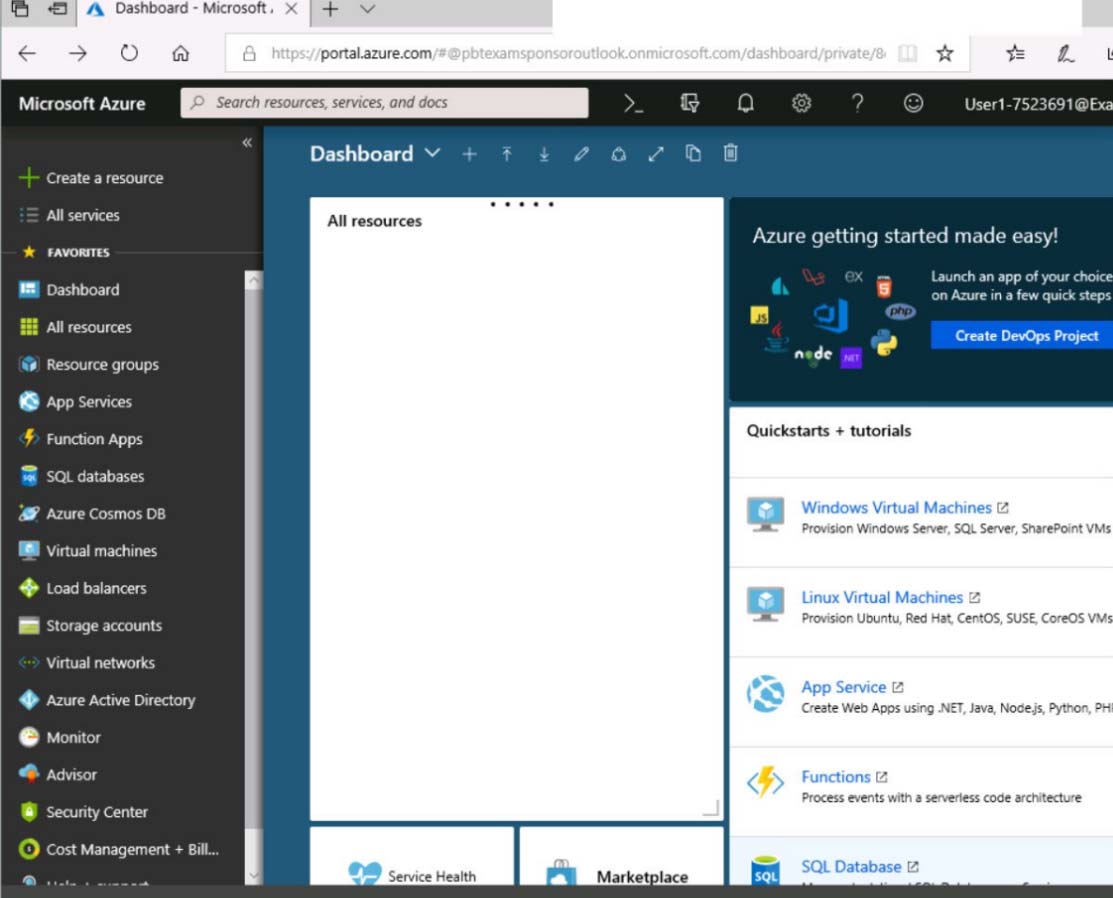
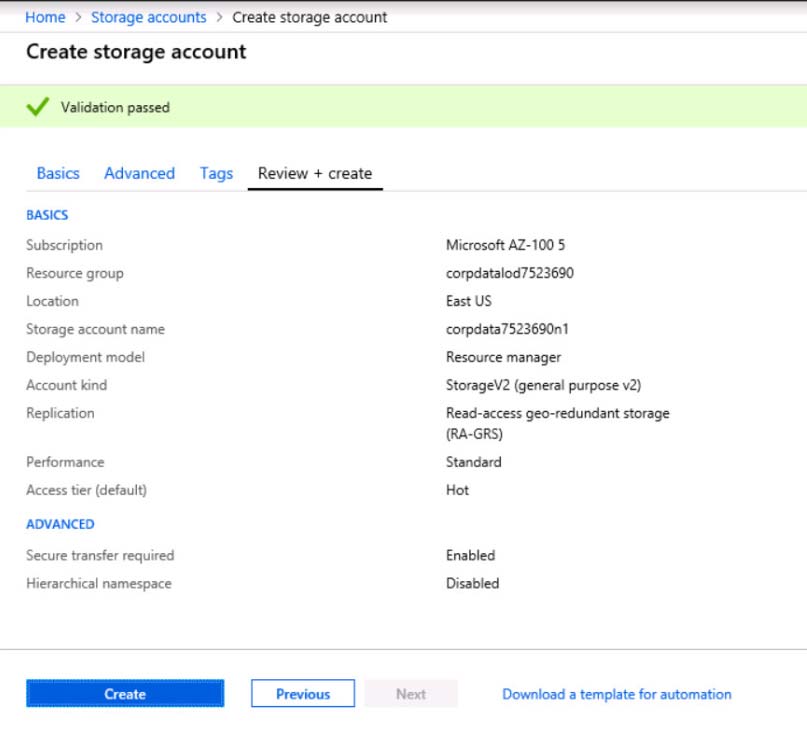
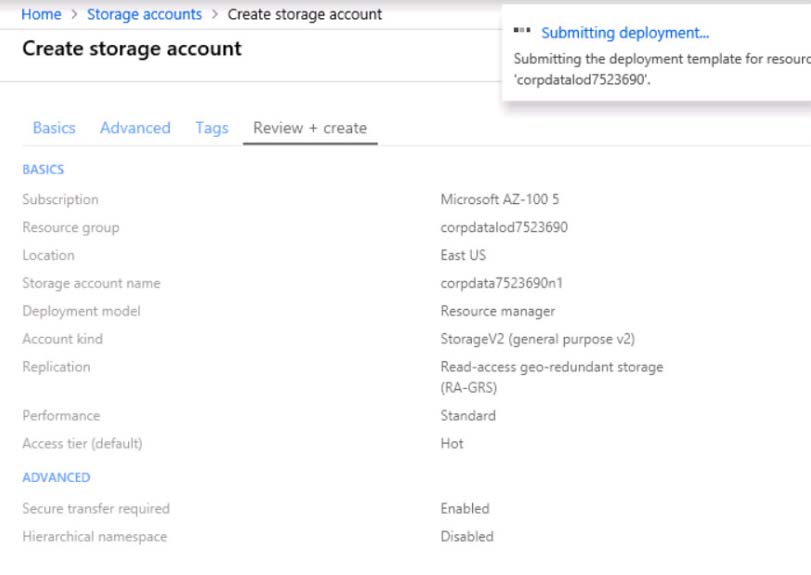

When you are finished performing all the tasks, click the "˜Next' button. Note that you cannot return to the lab once you click the "˜Next' button. Scoring occur in the background while you complete the rest of the exam. Overview - The following section of the exam is a lab. In this section, you will perform a set of tasks in a live environment. While most functionality will be available to you as it would be in a live environment, some functionality (e.g., copy and paste, ability to navigate to external websites) will not be possible by design. Scoring is based on the outcome of performing the tasks stated in the lab. In other words, it doesn't matter how you accomplish the task, if you successfully perform it, you will earn credit for that task. Labs are not timed separately, and this exam may have more than one lab that you must complete. You can use as much time as you would like to complete each lab. But, you should manage your time appropriately to ensure that you are able to complete the lab(s) and all other sections of the exam in the time provided. Please note that once you submit your work by clicking the Next button within a lab, you will NOT be able to return to the lab. To start the lab - You may start the lab by clicking the Next button. You need to deploy two Azure virtual machines named VM1003a and VM1003b based on an Ubuntu Server image. The deployment must meet the following requirements: - Provide a Service Level Agreement (SLA) of 99.95 percent availability - Use managed disks What should you do from the Azure portal?
Note: This question is part of series of questions that present the same scenario. Each question in the series contains a unique solution that might meet the stated goals. Some question sets might have more than one correct solution, while others might not have a correct solution. After you answer a question in this section, you will NOT be able to return to it. As a result, these questions will not appear in the review screen. You have an Azure Active Directory (Azure AD) tenant named contoso.com. A user named Admin1 attempts to create an access review from the Azure Active Directory admin center and discovers that the Access reviews settings are unavailable. Admin1 discovers that all the other Identity Governance settings are available. Admin1 is assigned the User administrator, Compliance administrator, and Security administrator roles. You need to ensure that the Admin1 can create access reviews in contoso.com. Solution: You purchase an Azure Directory Premium P2 license for contoso.com. Does this meet the goal?
A. Yes
B. No
SIMULATION - Click to expand each objective. To connect to the Azure portal, type https://portal.azure.com in the browser address bar.
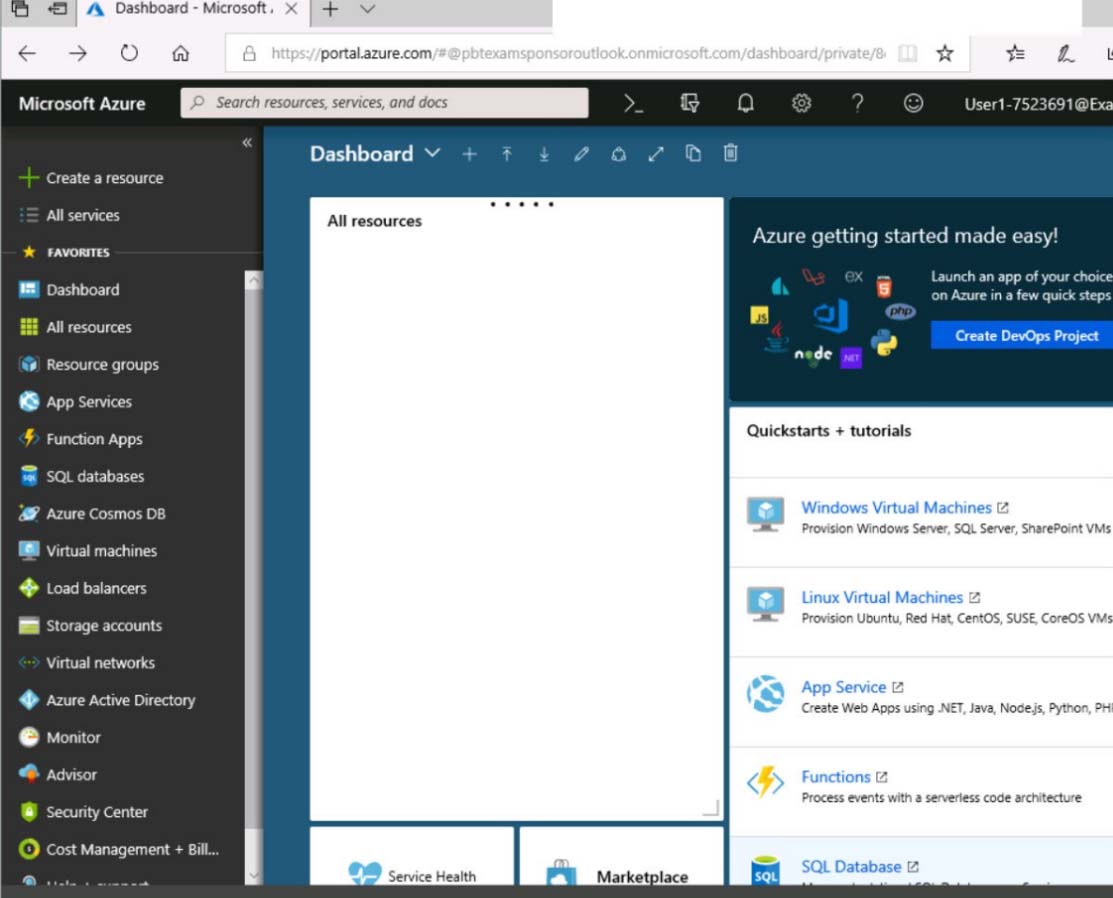
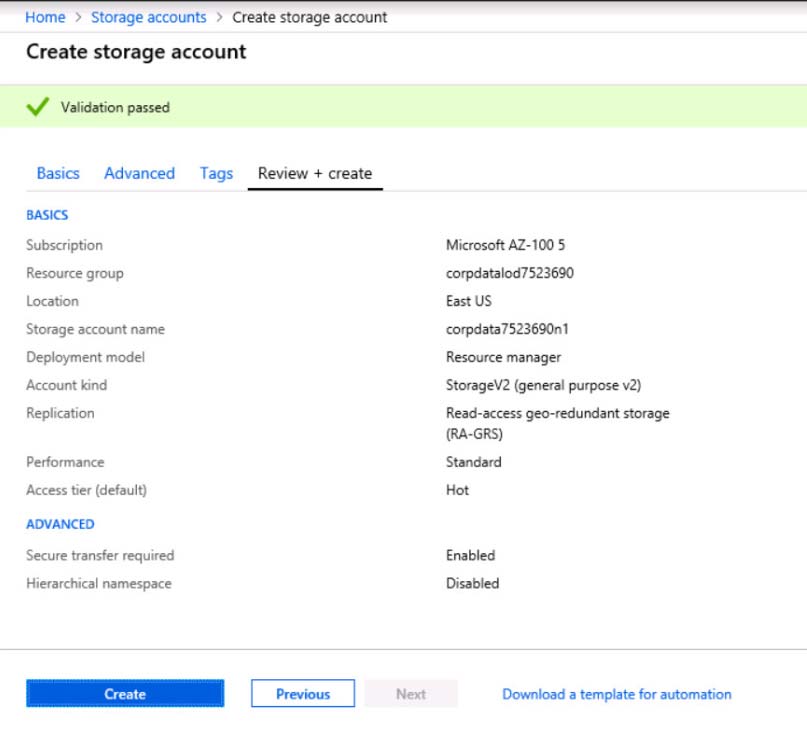
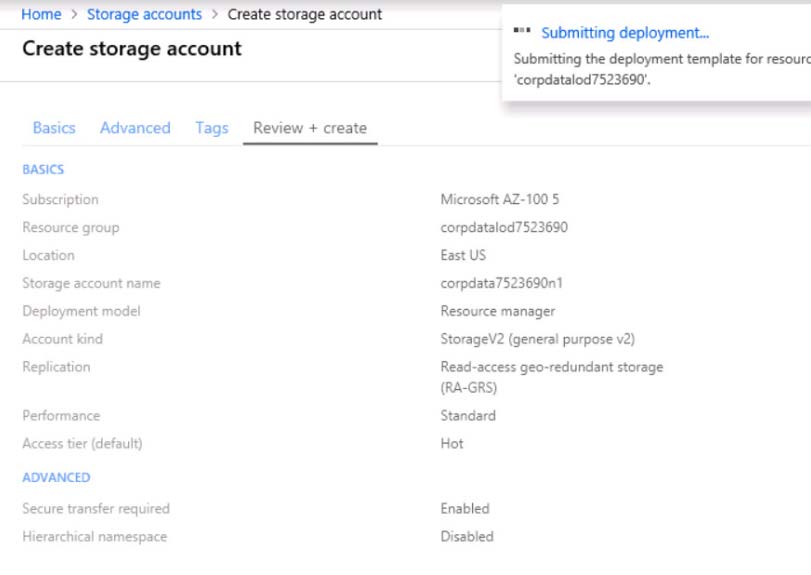
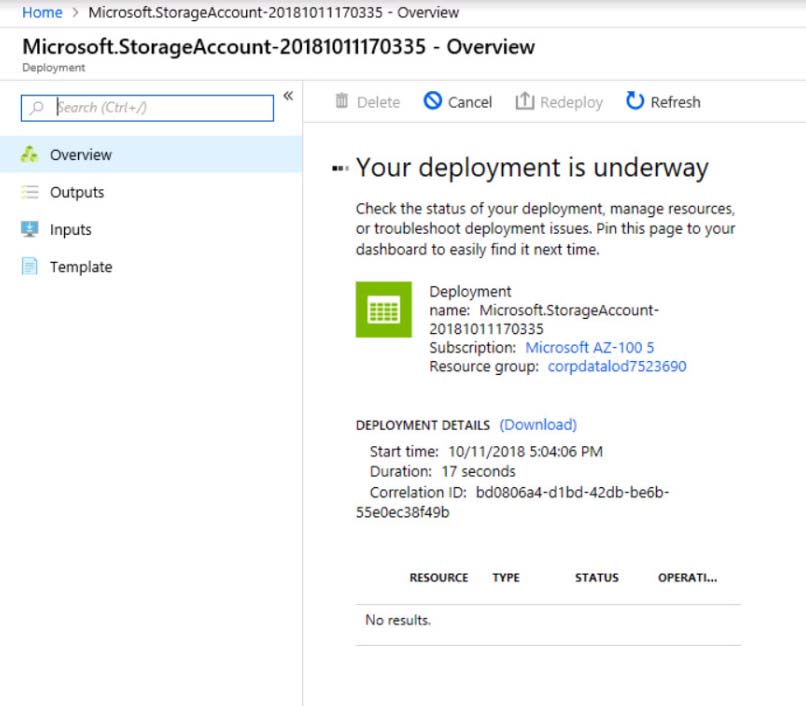
When you are finished performing all the tasks, click the "˜Next' button. Note that you cannot return to the lab once you click the "˜Next' button. Scoring occur in the background while you complete the rest of the exam. Overview - The following section of the exam is a lab. In this section, you will perform a set of tasks in a live environment. While most functionality will be available to you as it would be in a live environment, some functionality (e.g., copy and paste, ability to navigate to external websites) will not be possible by design. Scoring is based on the outcome of performing the tasks stated in the lab. In other words, it doesn't matter how you accomplish the task, if you successfully perform it, you will earn credit for that task. Labs are not timed separately, and this exam may have more than one lab that you must complete. You can use as much time as you would like to complete each lab. But, you should manage your time appropriately to ensure that you are able to complete the lab(s) and all other sections of the exam in the time provided. Please note that once you submit your work by clicking the Next button within a lab, you will NOT be able to return to the lab. To start the lab - You may start the lab by clicking the Next button. Your on-premises network uses an IP address range of 131.107.2.0 to 131.107.2.255. You need to ensure that only devices from the on-premises network can connect to the rg1lod8322490n1 storage account. What should you do from the Azure portal?
You discover that VM3 does NOT meet the technical requirements. You need to verify whether the issue relates to the NSGs. What should you use?
A. Diagram in VNet1
B. Diagnostic settings in Azure Monitor
C. IP flow verify in Azure Network Watcher
D. Diagnose and solve problems in Traffic Manager profiles
E. the security recommendations in Azure Advisor
You develop an entertainment application where users can buy and trade virtual real estate. The application must scale to support thousands of users. The current architecture includes five Azure virtual machines (VM) that connect to an Azure SQL Database for account information and Azure Table Storage for backend services. A user interacts with these components in the cloud at any given time. ✑ Routing Service "" Routes a request to the appropriate service and must not persist data across sessions. ✑ Account Service "" Stores and manages all account information and authentication and requires data to persist across sessions ✑ User Service "" Stores and manages all user information and requires data to persist across sessions. ✑ Housing Network Service "" Stores and manages the current real-estate economy and requires data to persist across sessions. ✑ Trade Service "" Stores and manages virtual trade between accounts and requires data to persist across sessions. Due to volatile user traffic, a microservices solution is selected for scale agility. You need to migrate to a distributed microservices solution on Azure Service Fabric. Solution: Create a Service Fabric Cluster with a stateful Reliable Service for each component. Does the solution meet the goal?
A. Yes
B. No
DRAG DROP - You are designing a solution to secure a company's Azure resources. The environment hosts 10 teams. Each team manages a project and has a project manager, a virtual machine (VM) operator, developers, and contractors. Project managers must be able to manage everything except access and authentication for users. VM operators must be able to manage VMs, but not the virtual network or storage account to which they are connected. Developers and contractors must be able to manage storage accounts. You need to recommend roles for each member. What should you recommend? To answer, drag the appropriate roles to the correct employee types. Each role may be used once, more than once, or not at all. You may need to drag the split bar between panes or scroll to view content. NOTE: Each correct selection is worth one point. Select and Place:
You create an Azure Time Series Insights event handler. You need to send data over the network as efficiently as possible and optimize query performance. What should you do?
A. Create a query plan
B. Send all properties
C. Use a Tag ID
D. Use reference data
SIMULATION - Click to expand each objective. To connect to the Azure portal, type https://portal.azure.com in the browser address bar.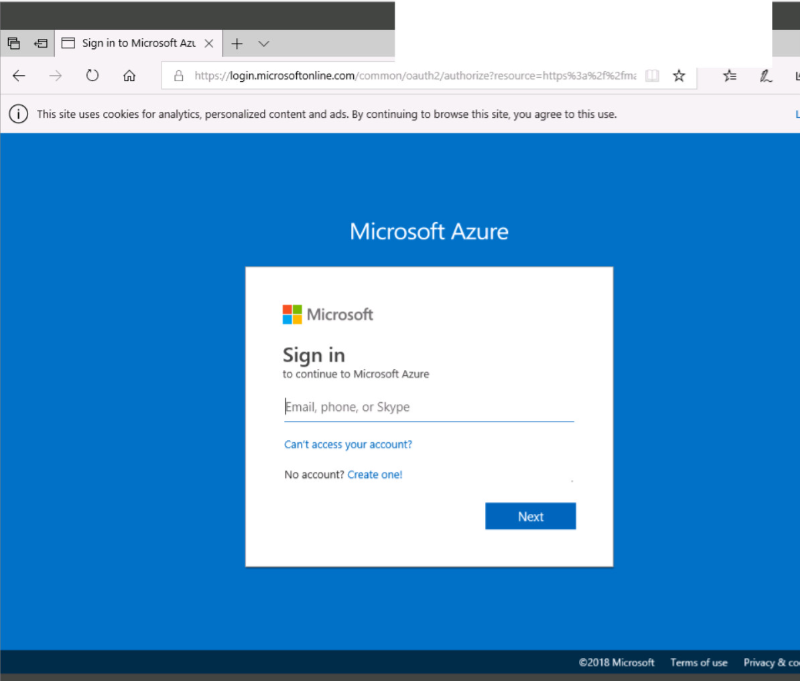


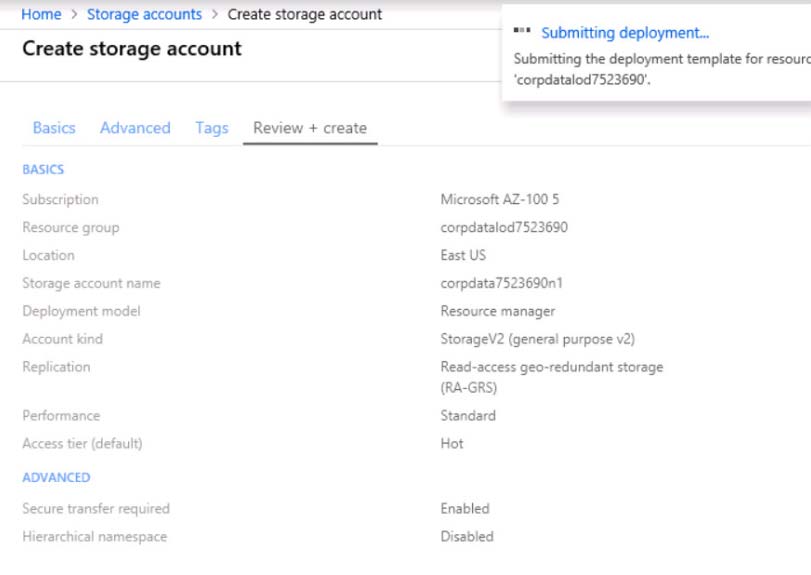
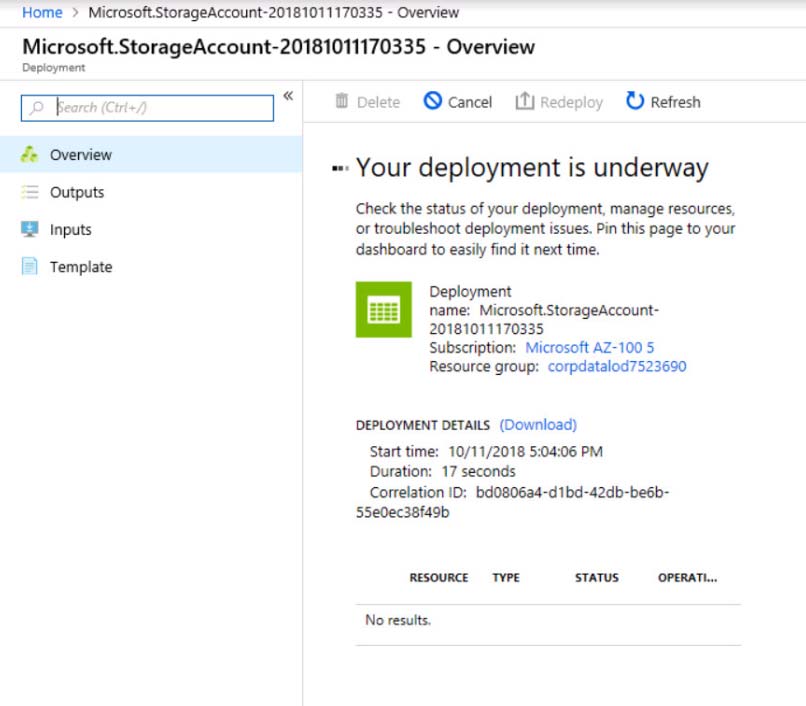
When you are finished performing all the tasks, click the "˜Next' button. Note that you cannot return to the lab once you click the "˜Next' button. Scoring occur in the background while you complete the rest of the exam. Overview - The following section of the exam is a lab. In this section, you will perform a set of tasks in a live environment. While most functionality will be available to you as it would be in a live environment, some functionality (e.g., copy and paste, ability to navigate to external websites) will not be possible by design. Scoring is based on the outcome of performing the tasks stated in the lab. In other words, it doesn't matter how you accomplish the task, if you successfully perform it, you will earn credit for that task. Labs are not timed separately, and this exam may have more than one lab that you must complete. You can use as much time as you would like to complete each lab. But, you should manage your time appropriately to ensure that you are able to complete the lab(s) and all other sections of the exam in the time provided. Please note that once you submit your work by clicking the Next button within a lab, you will NOT be able to return to the lab. To start the lab - You may start the lab by clicking the Next button. You plan to connect several virtual machines to the VNET01-USEA2 virtual network. In the Web-RGlod8322489 resource group, you need to create a virtual machine that uses the Standard_B2ms size named Web01 that runs Windows Server 2016. Web01 must be added to an availability set. What should you do from the Azure portal?
HOTSPOT - You plan to deploy 20 Azure virtual machines by using an Azure Resource Manager template. The virtual machines will run the latest version of Windows Server 2016 Datacenter by using an Azure Marketplace image. You need to complete the storageprofile section of the template. How should you complete the storageProfile section? To answer, select the appropriate options in the answer area. NOTE: Each correct selection is worth one point. Hot Area:
DRAG DROP - You develop a web app that uses the tier D1 app service plan by using the Web Apps feature of Microsoft Azure App Service. Spikes in traffic have caused increases in page load times. You need to ensure that the web app automatically scales when CPU load is about 85 percent and minimize costs. Which four actions should you perform in sequence? To answer, move the appropriate actions from the list of actions to the answer area and arrange them in the correct order. NOTE: More than one order of answer choices is correct. You will receive credit for any of the correct orders you select. Select and Place:
SIMULATION - Click to expand each objective. To connect to the Azure portal, type https://portal.azure.com in the browser address bar.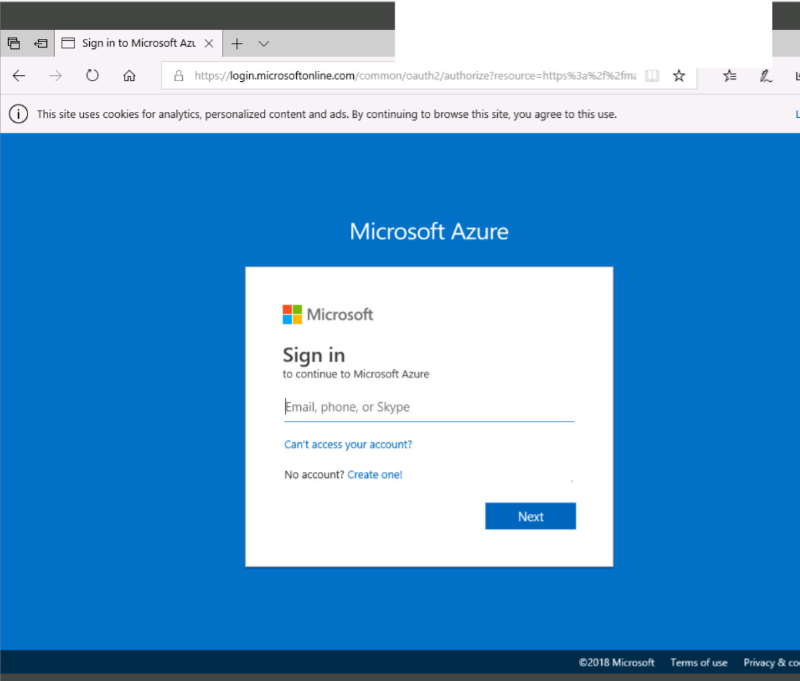
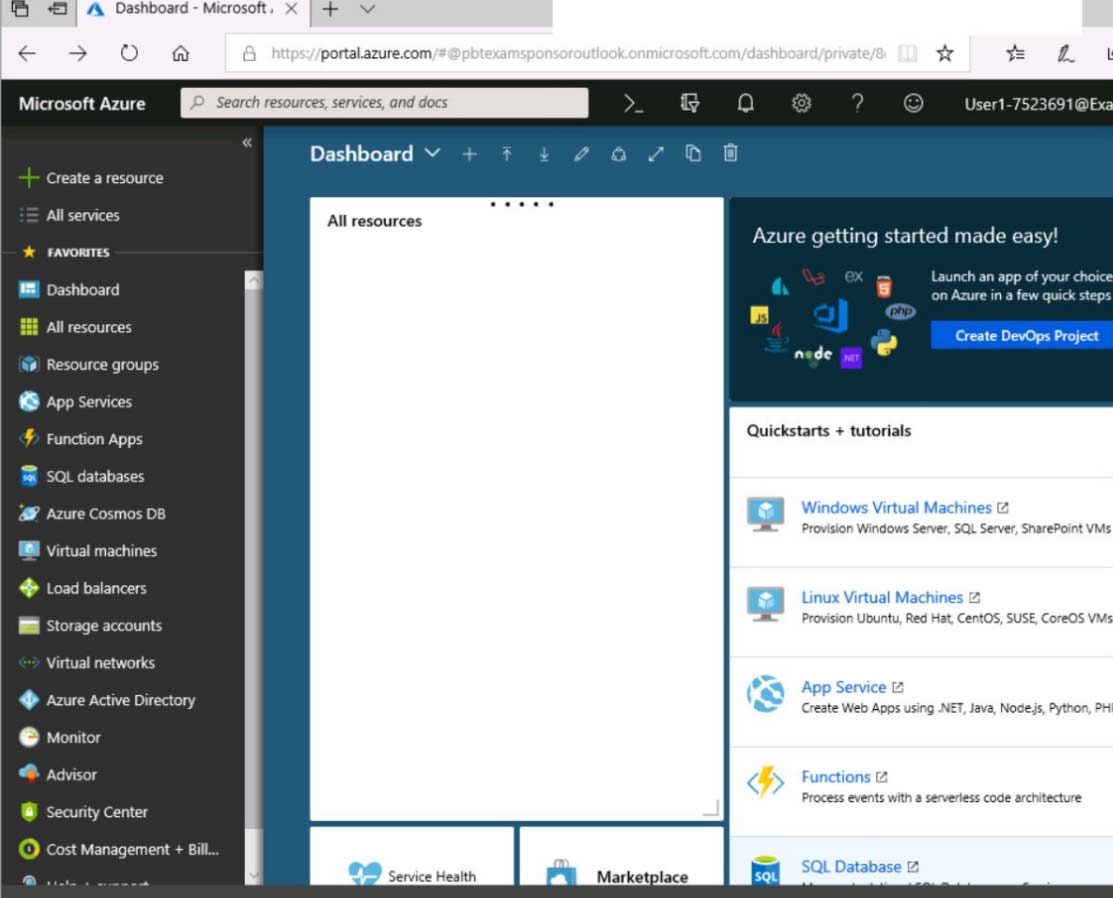
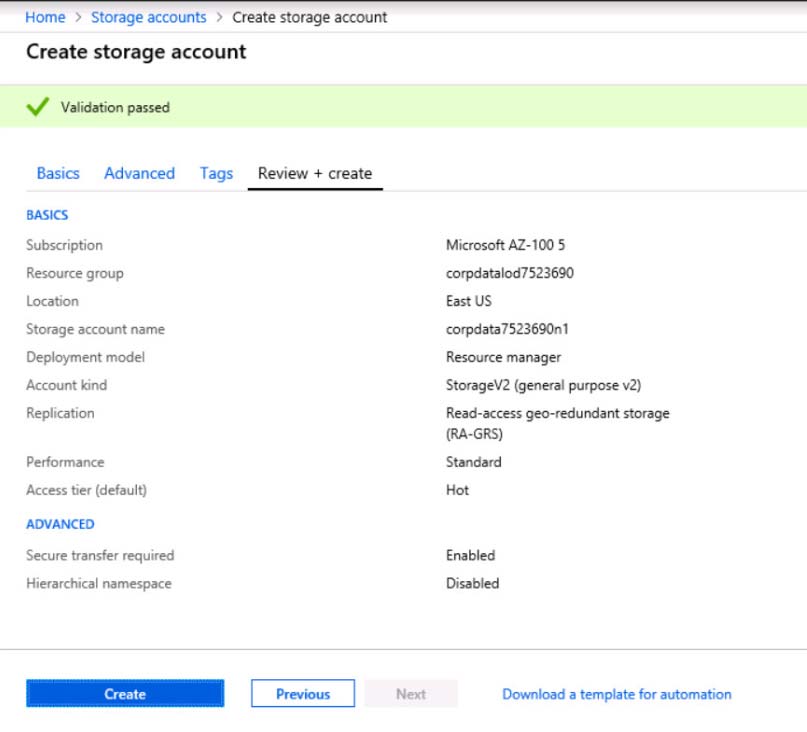
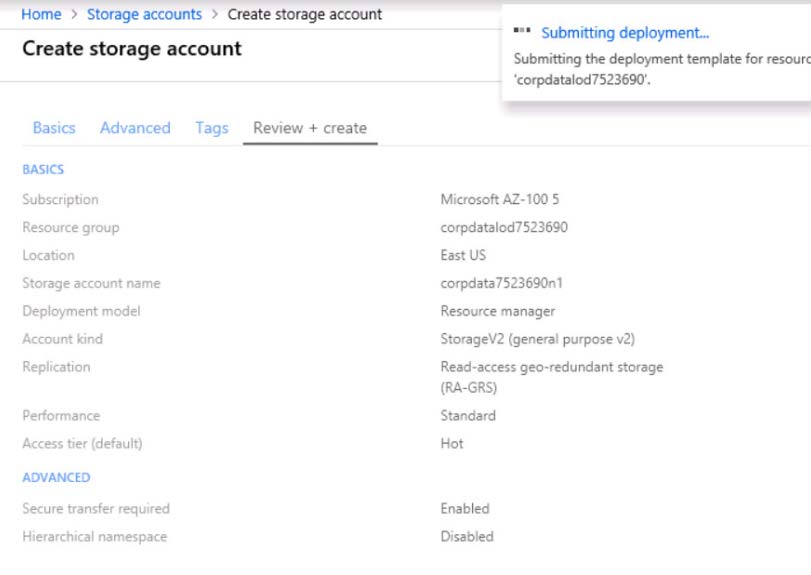
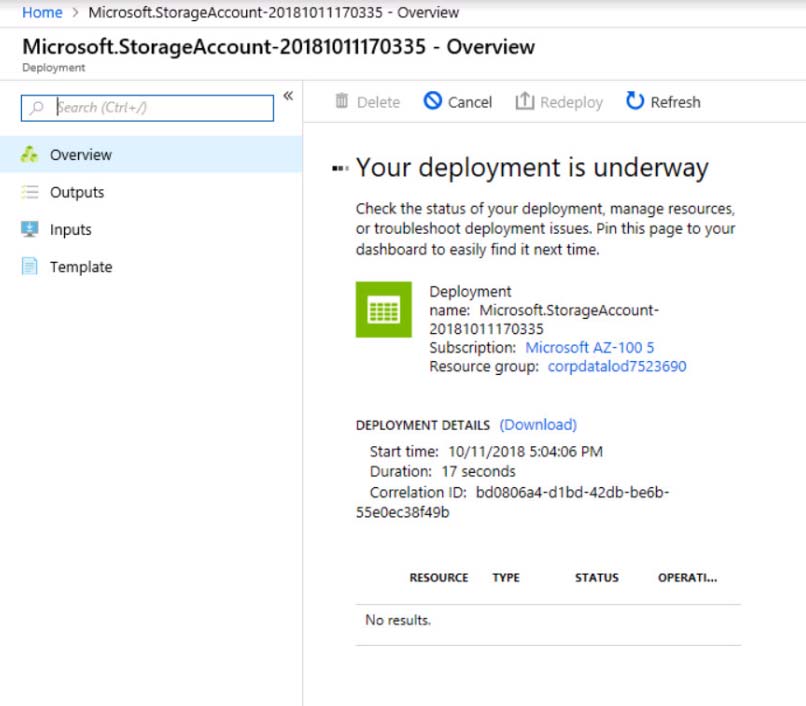
When you are finished performing all the tasks, click the "˜Next' button. Note that you cannot return to the lab once you click the "˜Next' button. Scoring occur in the background while you complete the rest of the exam. Overview - The following section of the exam is a lab. In this section, you will perform a set of tasks in a live environment. While most functionality will be available to you as it would be in a live environment, some functionality (e.g., copy and paste, ability to navigate to external websites) will not be possible by design. Scoring is based on the outcome of performing the tasks stated in the lab. In other words, it doesn't matter how you accomplish the task, if you successfully perform it, you will earn credit for that task. Labs are not timed separately, and this exam may have more than one lab that you must complete. You can use as much time as you would like to complete each lab. But, you should manage your time appropriately to ensure that you are able to complete the lab(s) and all other sections of the exam in the time provided. Please note that once you submit your work by clicking the Next button within a lab, you will NOT be able to return to the lab. To start the lab - You may start the lab by clicking the Next button. Your company plans to host in Azure the source files of several line-of-business applications. You need to create an Azure file share named corpsoftware in the storagelod8322489 storage account. The solution must ensure that corpsoftware can store only up to 250 GB of data. What should you do from the Azure portal?
Note: This question is part of a series of questions that present the same scenario. Each question in the series contains a unique solution. Determine whether the solution meets the stated goals. You need to meet the vendor notification requirement. Solution: Configure notifications in the Azure API Management instance. Does the solution meet the goal?
A. Yes
B. No
HOTSPOT - You plan to create an Azure Storage account in the Azure region of East US 2. You need to create a storage account that meets the following requirements: - Replicates synchronously - Remains available if a single data center in the region fails How should you configure the storage account? To answer, select the appropriate options in the answer area. NOTE: Each correct selection is worth one point. Hot Area:
You have an Azure subscription named Subscription1 that contains an Azure virtual machine named VM1. VM1 is in a resource group named RG1. VM1 runs services that will be used to deploy resources to RG1. You need to ensure that a service running on VM1 can manage the resources in RG1 by using the identity of VM1. What should you do first?
A. From the Azure portal, modify the Access control (IAM) settings of RG1.
B. From the Azure portal, modify the Policies settings of RG1.
C. From the Azure portal, modify the Access control (IAM) settings of VM1.
D. From the Azure portal, modify the value of the Managed Service Identity option for VM1.
You need to meet the vendor notification requirement. Solution: Create and apply a custom outbound Azure API Management policy. Does the solution meet the goal?
A. Yes
B. No
You have an Azure subscription that contains the storage accounts shown in the following table.You enable Azure Advanced Threat Protection (ATP) for all the storage accounts. You need to identify which storage accounts will generate Azure ATP alerts. Which two storage accounts should you identify? Each correct answer presents part of the solution. NOTE: Each correct selection is worth one point.
A. storagecontoso1
B. storagecontoso2
C. storagecontoso3
D. storagecontoso4
E. storagecontoso5
You are implementing authentication for applications in your company. You plan to implement self-service password reset (SSPR) and multifactor authentication (MFA) in Azure Active Directory (Azure AD). You need to select authentication mechanisms that can be used for both MFA and SSPR. Which two authentication methods should you use? Each correct answer presents a complete solution. NOTE: Each correct selection is worth one point.
A. Short Message Service (SMS) messages
B. Azure AD passwords
C. Email addresses
D. Security questions
E. App passwords
You need to configure a host name for WebApp2. What should you do first?
A. In Azure AD, add contoso.com as a custom domain name
B. In the public DNS zone of contoso.onmicrosoft.com, add an NS record
C. In Azure AD, add webapp2.azurewebsites.net as a custom domain name
D. In the public DNS zone of contoso.com, add a CNAME record
Access Full AZ-300 Mock Test Free
Want a full-length mock test experience? Click here to unlock the complete AZ-300 Mock Test Free set and get access to hundreds of additional practice questions covering all key topics.
We regularly update our question sets to stay aligned with the latest exam objectives—so check back often for fresh content!
Start practicing with our AZ-300 mock test free today—and take a major step toward exam success!





